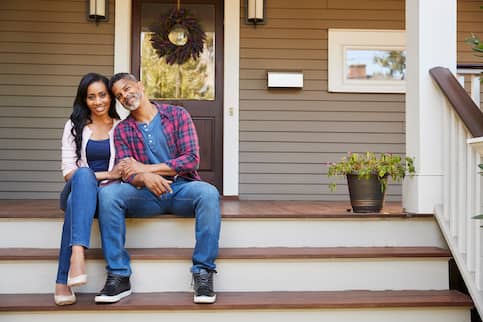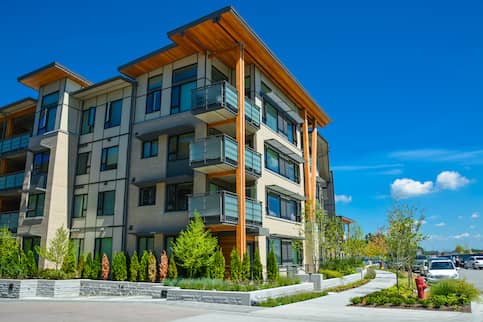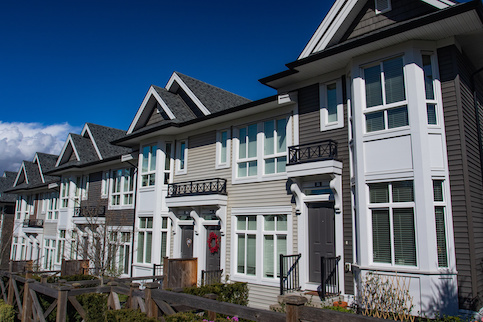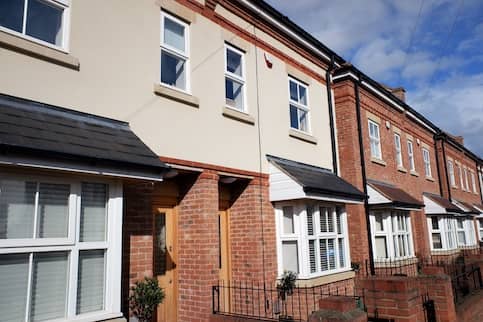The BRRRR method is a real estate investment strategy that generates passive income. The BRRRR method is one way to purchase rental properties, flip them, refinance them and repeat the process – helping you grow your real estate investment portfolio relatively quickly.
Read on to learn how the BRRRR strategy works, its pros and cons and how to confidently put the investment technique into practice.
BRRRR Meaning Explained
BRRRR is an acronym for buy, rehab, rent, refinance and repeat. This straightforward strategy relies on investing in a distressed property, rehabbing and renting it and then using the money you pocket from a cash-out refinance on the property to finance the purchase of another property you can rehab and rent.
The BRRRR method is one of several ways to invest in real estate, and it can be an effective strategy when done well. Let’s take a closer look at how the BRRRR method works.
See What You Qualify For
Buy A Home
Discover mortgage options that fit your unique financial needs.

Refinance
Refinance your mortgage to have more money for what matters.
Tap Into Equity
Use your home’s equity and unlock cash to achieve your goals.
How Does The BRRR Strategy Work?
The BRRRR strategy can set up a cycle that generates passive income. You may even generate enough income to buy bigger and better rental properties. Let’s take a look at the steps you’ll need to follow to successfully apply the BRRRR method.
Buy
First, you’ll need to find a property to apply the BRRRR method. A good candidate might be a distressed single-family home that’s below market value. Look for something structurally sound, but in need of renovations, cosmetic upgrades and general TLC. Distressed properties have lost considerable value but potentially have a high after-repair value (ARV). If a property can be renovated with a DIY overhaul, it may make it a good candidate for purchase by BRRRR investors.
Rehab
Next, you’ll need to complete the necessary renovations and make any upgrades. Some homes may need more extensive repairs than others.
Whether you’ve purchased an apartment, duplex, single-family home or condo, renovate the property to include desirable features, make sure it meets structural and safety codes and is inhabitable for your future tenants.
Rent
Following the renovation of the property, you’ll need to settle on a rental price and a strategy to find renters. When you vet prospective tenants, check for a good credit history and steady employment. If you can, get references from previous landlords.
As a property owner, running background and credit checks can help you thoroughly screen potential tenants.
Refinance
Next, you’ll want to refinance the property, which will mean applying for a cash-out refinance. A cash-out refinance converts home equity into cash you use to pay off your original home loan. Essentially, you take out a second mortgage, borrowing more money than you owe under your current loan. You’ll pocket the difference between your new, bigger loan and your original mortgage and use that money to purchase another property.
Repeat
Finally, you’ll use the proceeds from your cash-out refinance to make a down payment on your next investment property and start the process again. In other words, the final step of the BRRR method will look like the first: buying a distressed property. Then you’ll cycle through the remaining steps: rehab, rent, refinance, and if you’re up for another round: repeat.
Take your bathroom to the next level.
Compare multiple quotes from local pros with HomeAdvisor.
Example Of The BRRRR Real Estate Method
Let’s say you purchase a fixer-upper in Miami for $100,000 with a 20% down payment. You’ll pay $20,000 out of pocket and take out a mortgage for the remaining $80,000.
Next, you spend $30,000 rehabbing the property, hoping your renovations and repairs double the property’s value to $200,000.
Here’s a breakdown of the financial details:
- Sale price: $100,000
- Down payment: $20,000
- Total loan amount: $80,000
- Rehab costs: $30,000
After your DIY renovations are complete, the property is appraised at $200,000, and you rent the property for $2,000 a month.
A year or two later, you apply for a cash-out refinance that is 75% of the home’s appraised value. In this case, that would be $150,000.
You use the $150,000 from the cash-out refinance to pay off the original $80,000 mortgage, leaving you with $70,000 (in addition to the monthly rental income) to purchase, rehab, rent and refinance another property.
Keeping the BRRRR real estate strategy on repeat helps you create passive rental income and accumulate properties over time. As you can see, this investment strategy can be a powerful tool for real estate investors hoping to grow their income and holdings steadily over years.
Financing A BRRRR Investment Property
Investors have several options to finance a BRRRR investment property. Here are some types of home loans BRRRR investors can use:
- Conventional loan: Your standard 15-year or 30-year mortgage with a fixed interest rate or an adjustable-rate mortgage (ARM) with a variable rate after the initial fixed-interest period.
- Hard money loan: The loan is secured by real property (in this scenario, the distressed home you want to buy), not your creditworthiness as a borrower. Hard money loans are typically short-term loans offered by private investors or specialized companies. Banks don’t offer hard money loans.
- Private loan: Available from private parties who loan money in exchange for higher interest rates or stricter loan repayment requirements. This financing option may be riskier because there is no traditional lender behind the loan.
Pros Of The BRRRR Method
Real estate investors can enjoy several upsides when they apply the BRRRR method. For example:
- The ability to generate long-term passive income
- Opportunities to build a real estate rental portfolio in a relatively short time
- Requires less cash upfront than traditional investing methods
- Allows you to build equity in your properties
Cons Of The BRRRR Method
Of course, like any real estate investment strategy, simplicity and success aren’t guaranteed. There are several potential downsides to consider, including:
- The cost and effort required to rehab a home
- The amount of time the owner must wait before they can cash-out refinance
- Uncertainty around the future appraised value of the property
- The need to cultivate and maintain strong tenant rental relationships
The Bottom Line
In general, the BRRRR method in real estate offers investors a helpful way to generate passive income while growing their real estate portfolios. If you’re comfortable with rehabbing, renovating and flipping rental property, BRRRR might be the right investment strategy for you.
Find top-rated kitchen remodelers.
Compare multiple quotes from local pros with HomeAdvisor.

Scott Steinberg
Hailed as The Master of Innovation by Fortune magazine, and World’s Leading Business Strategist, award-winning professional speaker Scott Steinberg is among today’s best-known trends experts and futurists. A strategic adviser to four-star generals and a who’s who of Fortune 500s, he’s the bestselling author of 14 books including "Make Change Work for You" and "FAST >> FORWARD." The CEO of BIZDEV: The Intl. Association for Business Development and Strategic Planning, his website is www.AKeynoteSpeaker.com.












